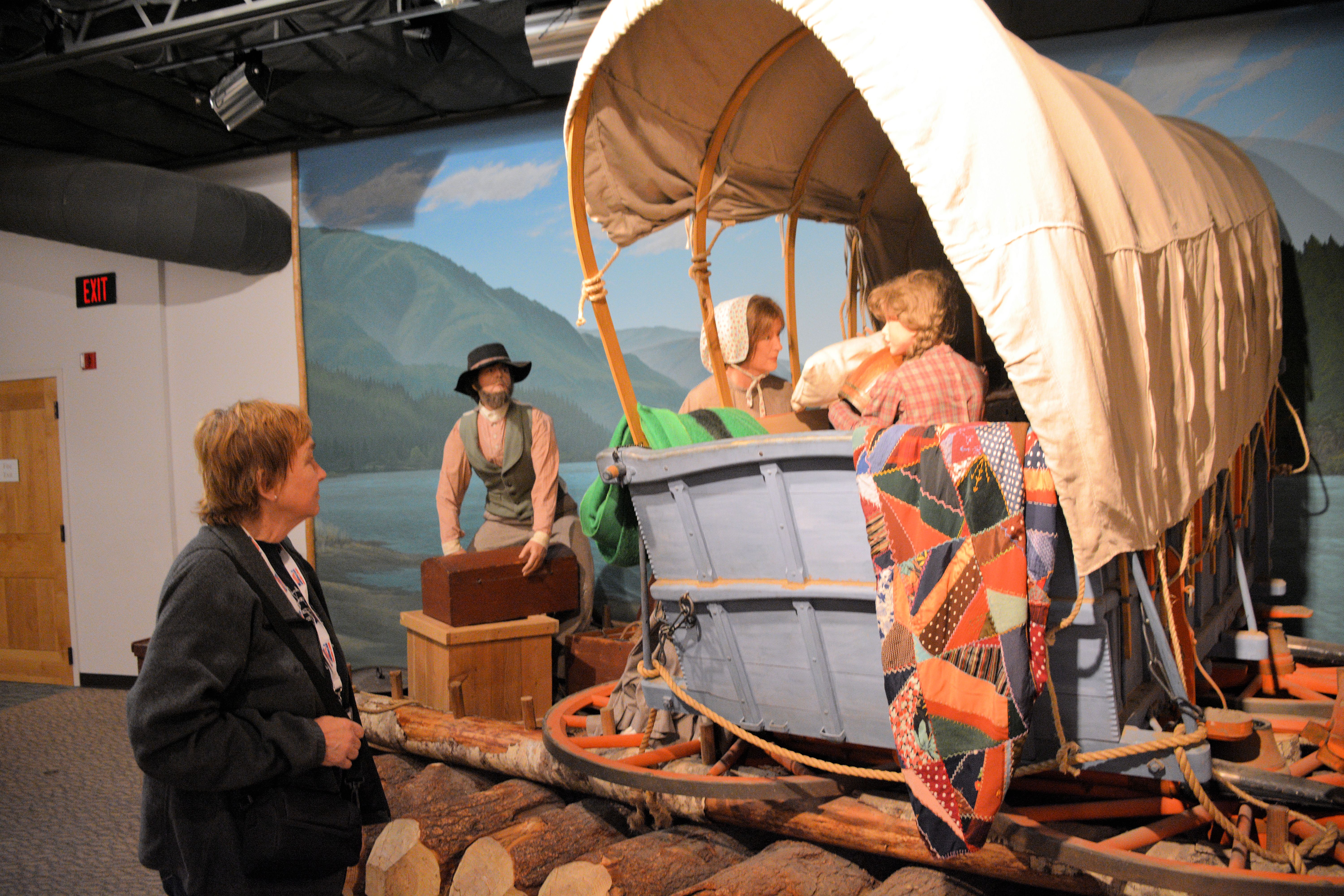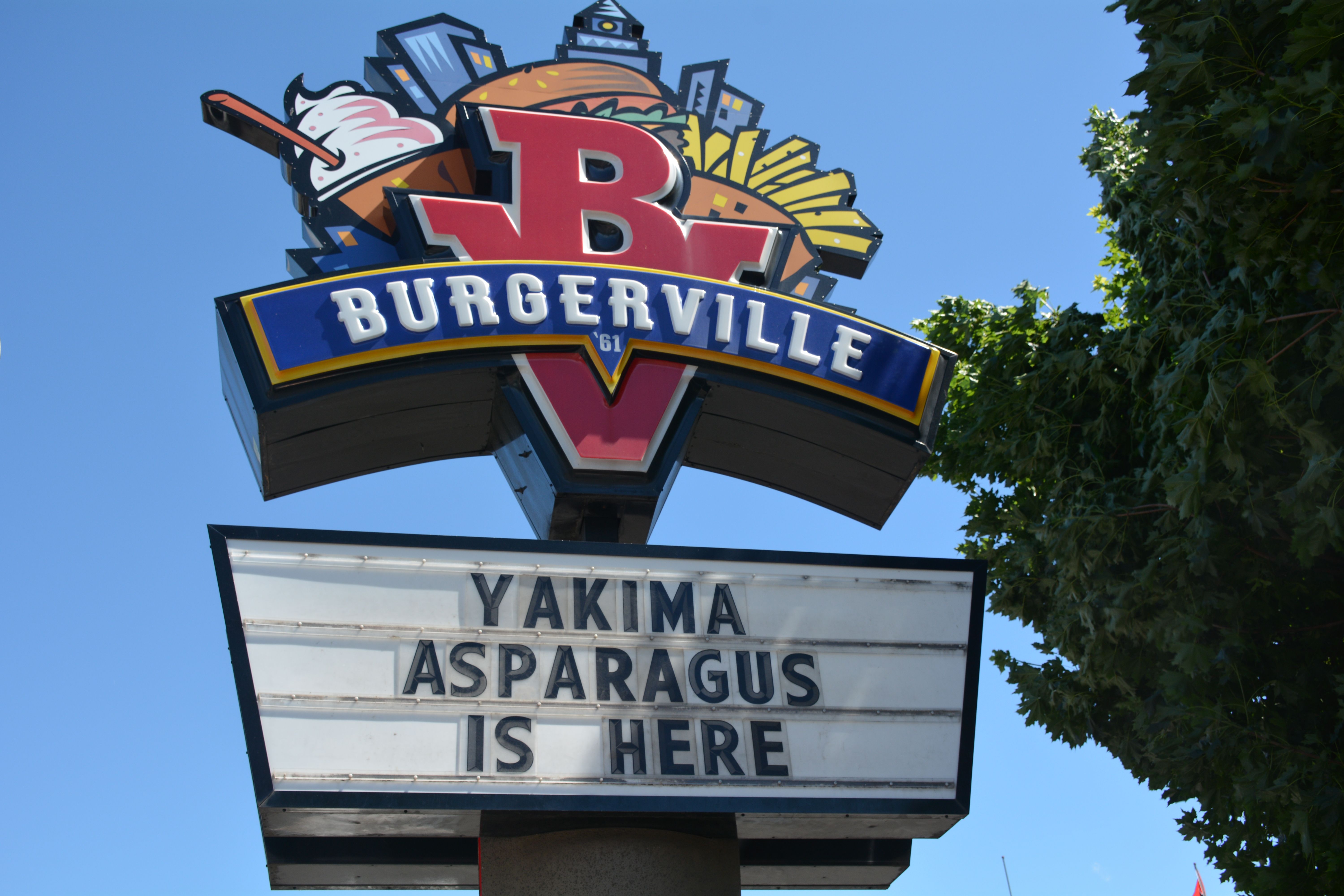Day 6 – The Dalles
Yesterday we were in The Dalles, OR. This area is one of the continent’s most significant archaeological regions. It is also an amazing place historically. The Native Americans came to the falls here from as far as what was California and Alaska. The reason was because the falls in this particular area of the Columbia River passed through an extremely narrow pass. This made is possible for them to catch enough salmon to feed their tribe for the rest of the year. It also gave them enough fish for trading. Archaeologists have found evidence of this dating back 10,000 years.
It was the end of the Oregon Trail. We have all studied what a difficult experience this was for the early settlers. The photo shows how they would take their wagons apart, build a raft, and float their wagons down the river. This was also extremely dangerous because the Columbia River, before the dams, was extremely wild. One can see how strong the current is today even with the dams. Swimming in this river would be almost impossible. Lewis and Clark camped here as well. Lewis and Clark wrote that there were so many fish one could walk across the river on them.
We went to a beautiful museum explaining the area and it was also a bird sanctuary. My favorite bird was the great horned owl. The handler told us why each bird had been rescued and why it could not be returned to the wild. Usually we hear broken this or that. No, the owl just refused to hunt. Was not interested in following prey or killing anything. She joked and said he must have fallen on his head when he fell out of the nest. I just think he was smart and realized quickly these people would feed him so why bother. Sound a little like Ryan to me.
 We told you that we have been served asparagus every meal since we have been here. The U.S. Department of Agriculture says that the “asparagus season is upon us.” About 4,700 acres of asparagus were harvested last year in Washington and the crops were worth about $18 million
We told you that we have been served asparagus every meal since we have been here. The U.S. Department of Agriculture says that the “asparagus season is upon us.” About 4,700 acres of asparagus were harvested last year in Washington and the crops were worth about $18 million
Within Washington, Yakima County is the second-largest producer, behind Franklin County, with 1,915 acres. You don’t have to plant it every year. Asparagus is a perennial plant, typically grown from a crown with the first edible spears coming three years later. A typical asparagus plant can produce spears for 10 or 11 years. During the harvest, one person typically works two acres. Harvesting involves walking through the field and cutting the individual spears. It is one of the more specialized areas of farm labor. Cutters have to be able to measure 8 or 9 inches with their eyes, as well as make sure their cuts don’t damage spears that are coming up. It’s also hard, grueling work. Cutters are paid either by the hour or piecework, typically working about four to six hours a day, avoiding the hotter part of the day. It takes about 1,800 people to harvest asparagus statewide, and finding them has been hard in recent years as you can imagine. Now you know more about asparagus than you even dreamed.

More to Follow,
Tom & Holly